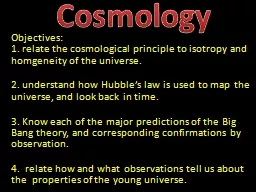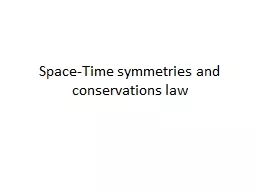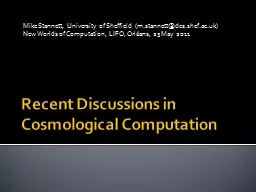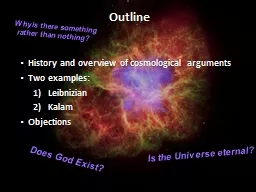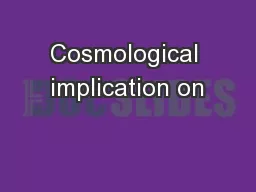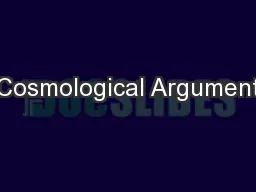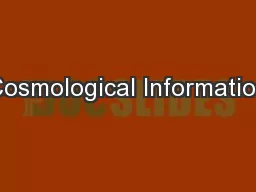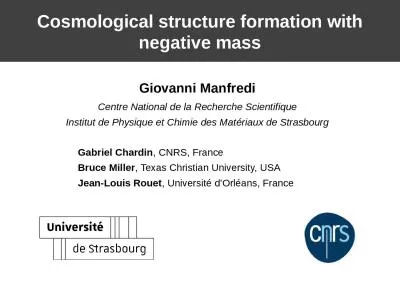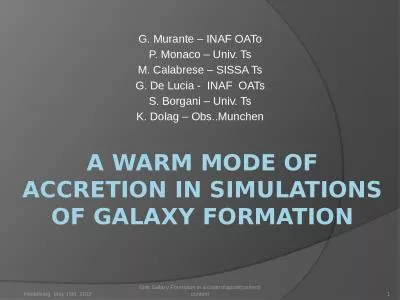PPT-Objectives: 1. relate the cosmological principle to isotropy and
Author : greyergy | Published Date : 2020-08-28
homgeneity of the universe 2 understand how Hubbles law is used to map the universe and look back in time 3 Know each of the major predictions of the Big Bang theory
Presentation Embed Code
Download Presentation
Download Presentation The PPT/PDF document "Objectives: 1. relate the cosmological p..." is the property of its rightful owner. Permission is granted to download and print the materials on this website for personal, non-commercial use only, and to display it on your personal computer provided you do not modify the materials and that you retain all copyright notices contained in the materials. By downloading content from our website, you accept the terms of this agreement.
Objectives: 1. relate the cosmological principle to isotropy and: Transcript
Download Rules Of Document
"Objectives: 1. relate the cosmological principle to isotropy and"The content belongs to its owner. You may download and print it for personal use, without modification, and keep all copyright notices. By downloading, you agree to these terms.
Related Documents

